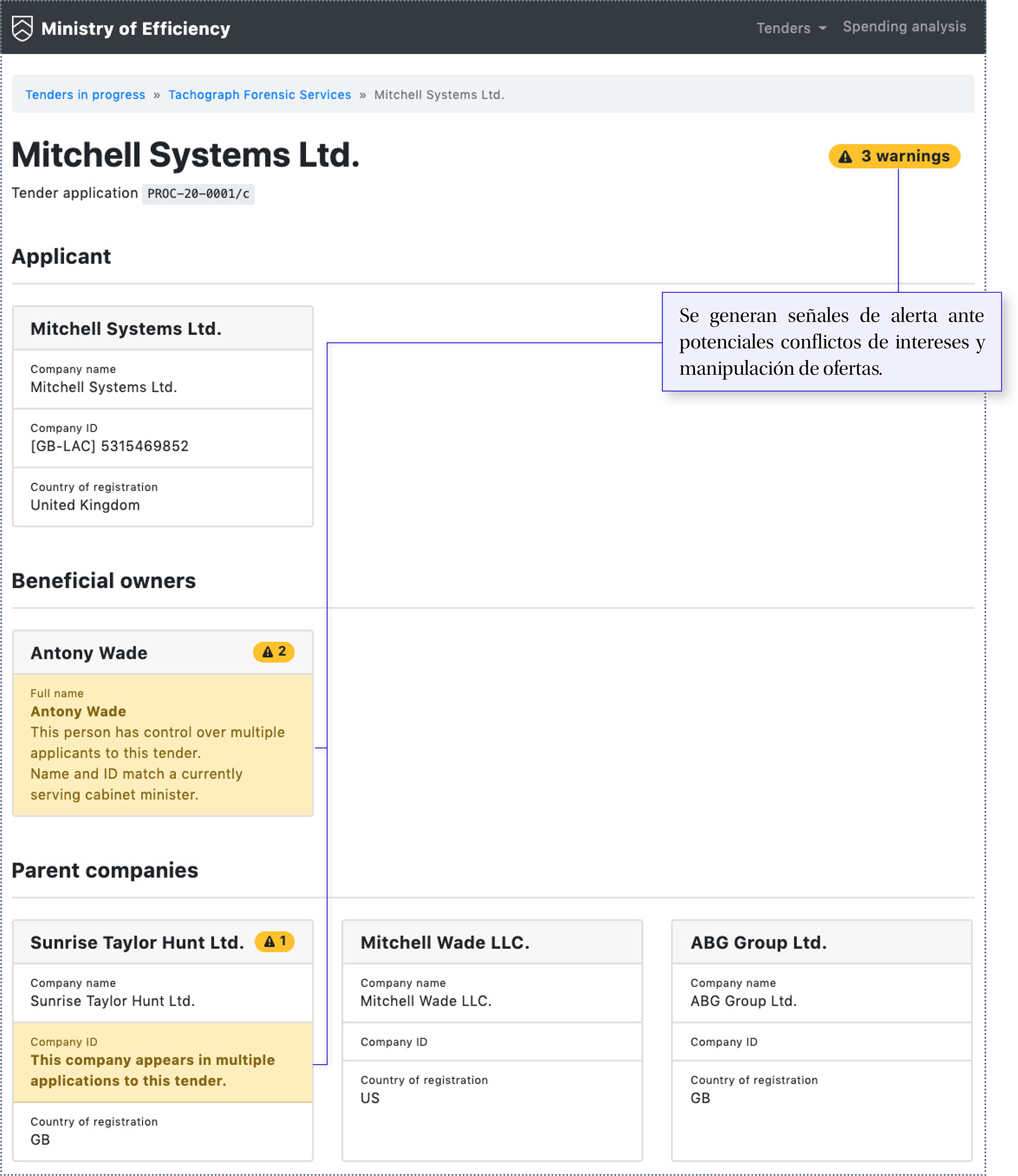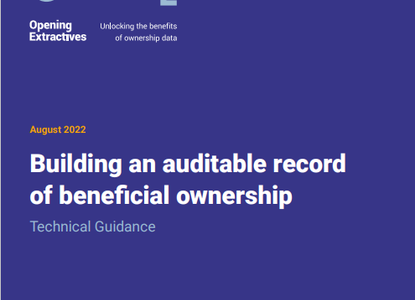Third and final look at “Structured and interoperable beneficial ownership data”

Three: greater policy impact
This is the third post in a series which looks at Open Ownership (OO)’s new Structured and Interoperable Beneficial Ownership Data briefing.
Our first blog post in this series discussed all the ways structured data improves functionality. The second covered cost savings and today we will cover the third benefit: the greater policy impact it enables. Beneficial ownership (BO) information is rarely used in isolation, and it is often at its most valuable when it is combined with other datasets.
What impact can BO data have in the real world?
When we talk of policy impact, we refer to a government achieving the goals which made it want to implement beneficial ownership transparency (BOT) reforms in the first place. Governments can implement BOT for a range of reasons
- Reducing risks such as corruption and tax evasion
- Building trust throughout society
- Promoting development opportunities
- Creating fair and open competition for government contracts
- Helping governments run effective tax systems
- Helping reduce organised crime, drug trafficking and money laundering and recover stolen assets.
As we can see, the benefits of beneficial ownership transparency usually accrue outside the agency which has implemented a BO register – often a company registrar – and therefore requires a holistic approach to assess the benefits of making data structured and interoperable.
How does structured data help achieve policy aims?
Five discrete ways that structured BO data works to help greater policy impact are laid out below.
1. BO data can be linked to other BO datasets from other countries
Beneficial ownership can be exercised through complex structures that include multiple jurisdictions, particularly in cases of corruption and money laundering. In a World Bank study of around 150 grand corruption cases, nearly all relied on corporate vehicles to conceal ownership, and the majority featured transnational structures. To make sense of the cross-jurisdictional nature of company ownership it is often necessary to join multiple BO datasets from different jurisdictions.
2. Structuring BO data opens up new types of analysis that are either resource intensive or impossible with unstructured BO information, and therefore have generally created a barrier to action. Unstructured information tends to create analysis that is small in scale, which is viable in only a few contexts, such as investigations relating to grand corruption cases. Structured data allows for proactive analysis of entire BO datasets at relatively low cost.
For example, in the UK, the Competitions and Markets Authority has started using structured BO data to analyse the concentration of ownership in specific sectors once common ownership and control are taken into account.
3. BO data can be combined with other datasets (about individuals or legal entities) which are gathered for other purposes
Bluetail (see figure one) is a prototype tool for linking beneficial ownership and procurement data. It is available in several languages and has been used in Indonesia, Kenya, and South Africa. As shown, it combines BO data and contracting data (both structured) to raise red flags during a government procurement process. It highlights areas of concern regarding the companies bidding for contracts, and the individuals who own them. This helps procurement officers assess risk and make informed decisions.

Figure 1. Bluetail, a prototype tool for linking beneficial ownership and procurement data.
4. Structured data enables timely access to auditable information.
This is particularly relevant for law enforcement and national security purposes, as it removes the need for manual searches and requests, which delay investigations and risk tipping off suspects. For more detail on auditable, historical records, see our recent technical guidance on this subject.
5. Finally, structured data creates the potential for more trusted data, and more resilient systems, through verification and register-wide analysis.
This can include automated verification of data, checks and challenges based on threshold-driven tests, and the collection and analysis of metadata on submissions (e.g. the use of particular company formation agents) that may reveal vulnerabilities in particular areas of the system.
Conclusion
In this post, we have explained five ways that structured BO data can have arguably its biggest impact, in helping governments achieve their wider policy aims. Earlier posts have covered how it can save money over the long-term, and in the first blog post in this series we covered all the ways it improves the functionality of BO registers.
We hope you’ve found this series useful, and as always, if you wish to read the source material, you will find the link to the policy briefing below. Happy reading!
Related articles and publications
Publication type
Blog post
Topics
Beneficial Ownership Data Standard
Sections
Implementation,
Research,
Technology
Open Ownership Principles
Structured data

